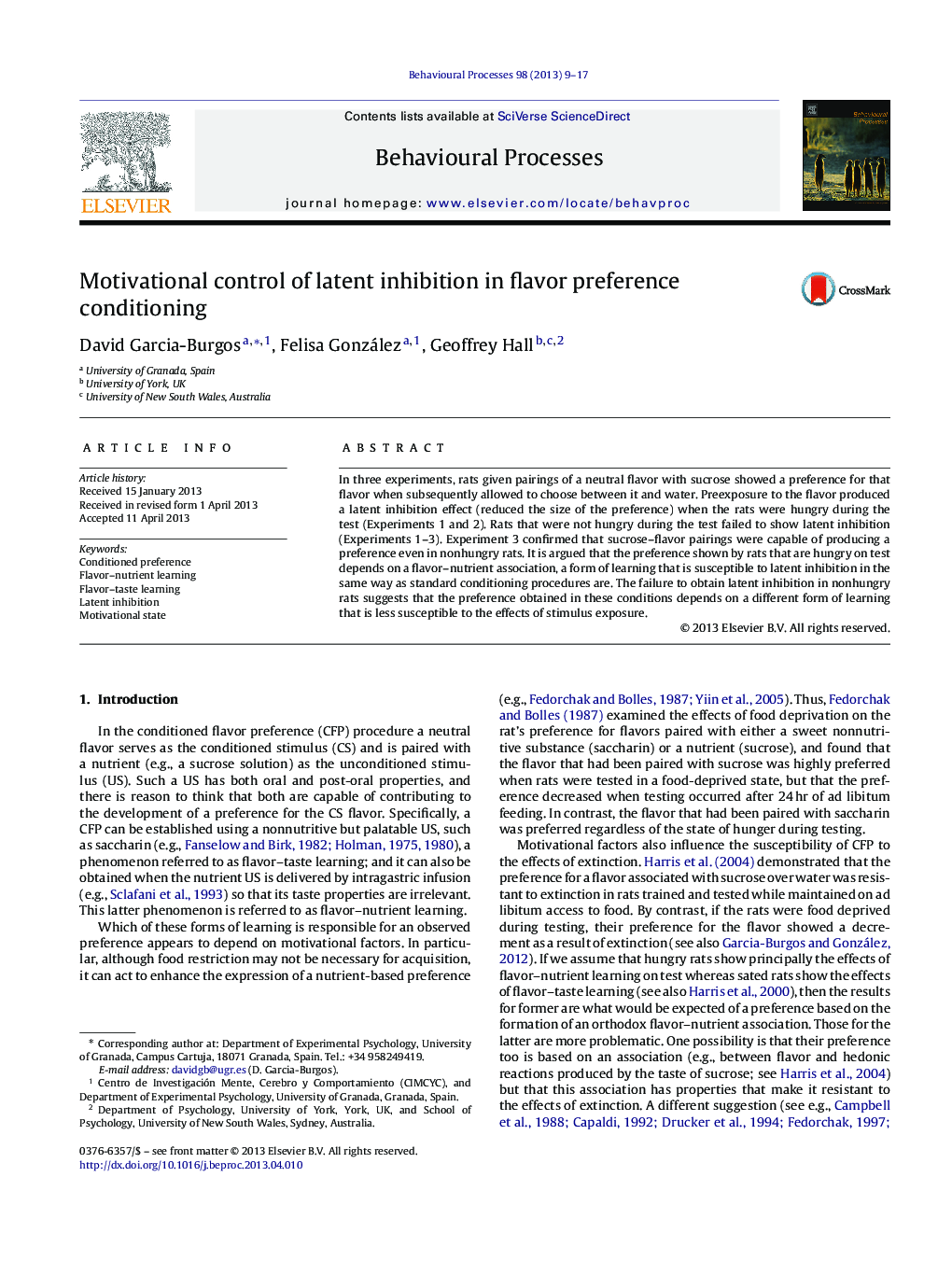| Article ID | Journal | Published Year | Pages | File Type |
|---|---|---|---|---|
| 2426798 | Behavioural Processes | 2013 | 9 Pages |
•Flavor–taste preference learning may be not susceptible to the flavor preexposure effect.•The expression of the flavor preexposure effect depends on the motivational state on test.•Learning that underlies latent inhibition effect depends on the class of reinforcer.•Two different mechanisms seem to underlie flavor–taste and flavor–nutrient learning.
In three experiments, rats given pairings of a neutral flavor with sucrose showed a preference for that flavor when subsequently allowed to choose between it and water. Preexposure to the flavor produced a latent inhibition effect (reduced the size of the preference) when the rats were hungry during the test (Experiments 1 and 2). Rats that were not hungry during the test failed to show latent inhibition (Experiments 1–3). Experiment 3 confirmed that sucrose–flavor pairings were capable of producing a preference even in nonhungry rats. It is argued that the preference shown by rats that are hungry on test depends on a flavor–nutrient association, a form of learning that is susceptible to latent inhibition in the same way as standard conditioning procedures are. The failure to obtain latent inhibition in nonhungry rats suggests that the preference obtained in these conditions depends on a different form of learning that is less susceptible to the effects of stimulus exposure.
